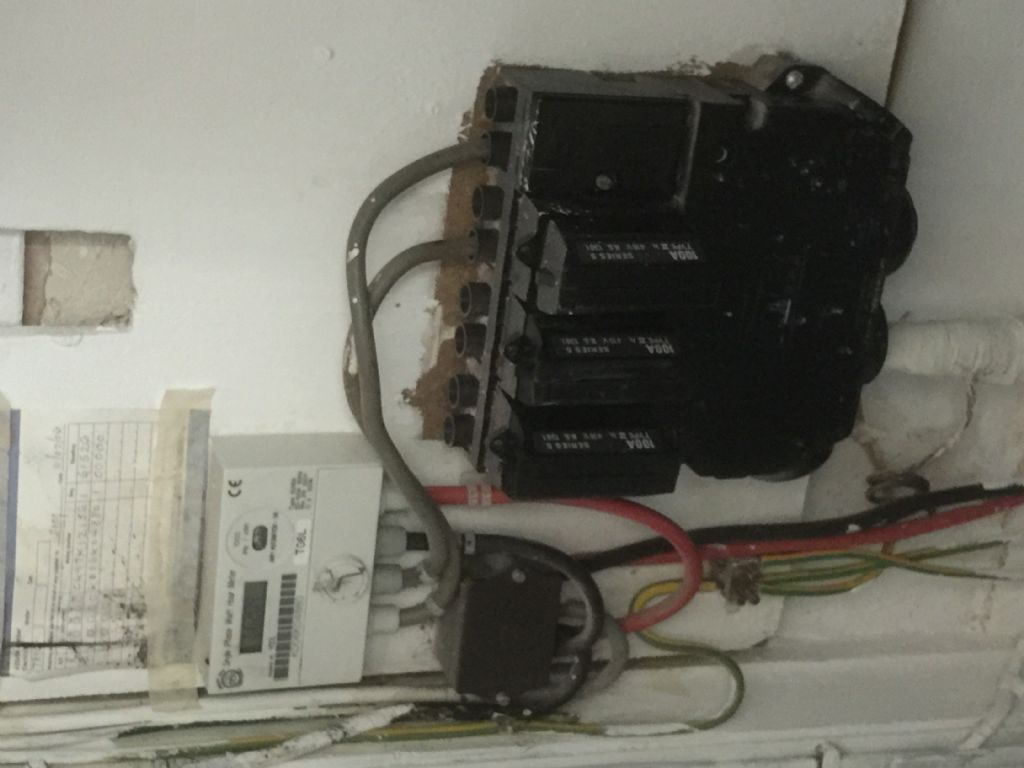It is usual to try to balance the load on the phases, so it is quite probable that a neighbour is on a different phase. All you need to do to check this is to measure the voltage between his phase and yours, using a suitable scale on the voltmeter of course. It would not be a good idea to try to parallel them to get more current anyway, since one lead will probably have more resistance than the other, so you will blow one fuse first, followed very quickly by the other, at not much more than the normal current for one lead.
In this country, it used to be not uncommon for the stove to be supplied by one phase while the rest of the house was on another. This would actually provide an opportunity for anyone who needed three phases, since with a suitable connection of two isolating transformers to the two phases, you can actually create the third. I've never heard of it actually being done, and it would probably be against the regulations, but it would work. These days it would be much easier just to use a vfd.
Incidently three phase welders of the older style, eg with just a transformer, actually only used two phases, with a transformer primary connected to them. The rod can only have single phase power going through it. Modern ones with an inverter probably use all three, as they will rectify the AC then chop it up again, much like a vfd does.
John
Ajohnw.





